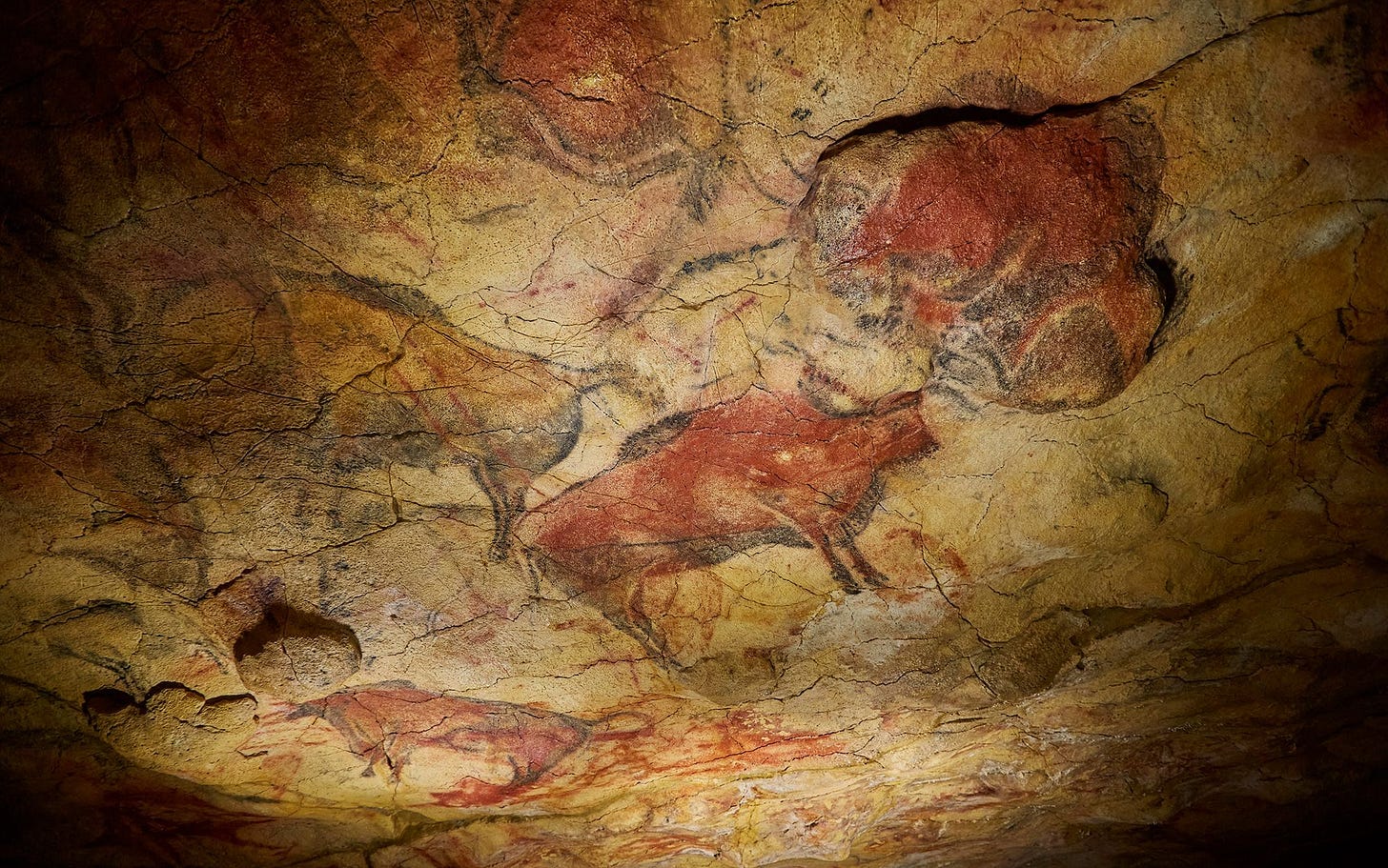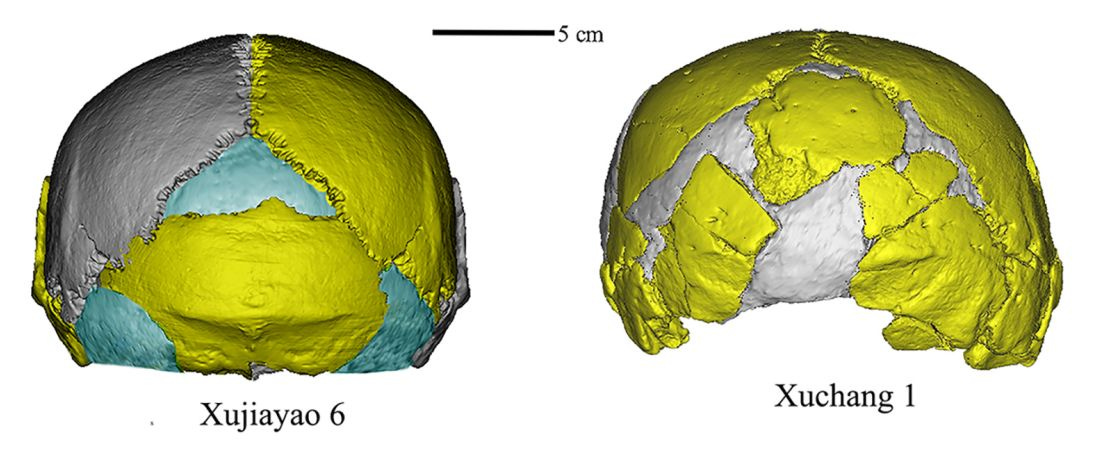Extreme Weekly #10
New Species, Re-awoken Species, Dubais Digital Museum, Gulf of?, Meteorites & More!
January 29th 2025
yoo, welcome to this week’s dive.
From glowing ancient art to bizarre breakthroughs and wild discoveries, we have a lineup that will blow your mind.
Lets get it done!
Thank you all for reading btw
01. Nvidia Stock Crashes Amid AI Shakeup
Nvidia recently faced a stunning 17% drop in stock value, marking its worst single-day decline since 2020. The sell-off erased $600 billion in market value and rippled across the tech sector, with companies like Broadcom and Micron losing over 10% as well. The trigger? A Chinese startup, DeepSeek, unveiled an AI model capable of matching Nvidia-powered systems while using far less computational power.
This breakthrough challenges Nvidia’s dominance in AI chip production as investors worry about reduced demand for its high-end GPUs. Despite the market panic, some analysts believe Nvidia’s role in AI infrastructure is still crucial, as the industry’s computational needs remain immense. Whether Nvidia bounces back or this marks a shift in the AI landscape remains to be seen.
600 billion dam dollars!
02. World’s Largest Digital Art Museum Opens in Dubai
Dubai has once again cemented its status as a hub of innovation with the unveiling of the world’s largest digital art museum, The Infinity Art Experience. Spanning over 100,000 square feet, this awe-inspiring venue redefines how we interact with art by combining cutting-edge technology and immersive design.
Unlike traditional galleries, this museum plunges visitors into a world where art comes alive. Imagine walking through Van Gogh’s “Starry Night” as the stars twinkle and swirl around you, or standing inside a holographic recreation of Da Vinci’s sketches. The museum incorporates elements of the metaverse, allowing visitors to interact with 3D projections, augmented reality (AR), and virtual reality (VR) pieces. Every corner is designed to be “Instagrammable,” ensuring it’s as much a cultural phenomenon as an artistic experience.
Key highlights include:
AI-Generated Art Installations: Real-time generative art pieces that evolve based on audience interaction.
Metaverse Galleries: A space where NFTs are displayed as immersive holograms, allowing buyers to explore digital ownership in 3D.
The Time Capsule Zone: A journey through the history of art, reimagined with AR to transport viewers to different eras.
03. The Glow-in-the-Dark Cave Paintings Mystery
Prehistoric cave paintings that glow under ultraviolet (UV) light. Found in a remote cave near Málaga, these artworks are thought to date back over 15,000 years and use naturally fluorescent minerals to create their otherworldly glow.
The pigments, likely derived from crushed shells and rare minerals, are invisible in normal light but reveal intricate patterns and symbols under UV exposure. Researchers believe this might be an early form of ritual art intended to interact with firelight or other natural elements to create a dynamic, almost magical visual effect.
This discovery sheds new light on ancient humans' creativity and spirituality, showing how they experimented with materials to craft something truly otherworldly. Could this mean there’s more to ancient art than we’ve ever imagined?
04. Google Maps to Rename Gulf of Mexico Following Executive Order
Google announced it will update its U.S. Maps to rename the Gulf of Mexico as the "Gulf of America," following an executive order from President Donald Trump. This change will be visible to users within the United States, while in Mexico, the body of water will retain its original name. International users will see both names displayed.
Google stated it follows official government sources for naming conventions and will implement the change once the U.S. Geographic Names Information System updates its records. This decision has sparked discussions about the implications of altering long-standing geographical names and the role of tech companies in reflecting political directives.
Additionally, the executive order includes reverting the name of Alaska's Denali to Mount McKinley within U.S. territories. Google plans to reflect this change on its maps as well.
Now I dunno if this is extreme or not?
05. Elusive Mount Lyell Shrew Photographed Alive for the First Time
A remarkable wildlife discovery, the Mount Lyell shrew (Sorex lyelli) has been photographed alive for the first time since its identification over a century ago. This elusive mammal, native to California's Sierra Nevada, was captured on camera by student researchers from the California Academy of Sciences. The team, comprising Vishal Subramanyan, Prakrit Jain, and Harper Forbes, documented the shrew in the Eastern Sierra Nevada.
The Mount Lyell shrew is known for its rarity and limited distribution, typically inhabiting sub-alpine riparian zones near fast-running streams at elevations between 2,100 and 3,600 meters. Weighing between 4 and 6 grams and measuring 8.9 to 11.5 centimeters in length, this small mammal has remained largely unseen in the wild.
This photographic evidence not only provides valuable insights into the species' current status but also underscores the importance of ongoing research and conservation efforts in the region.
06. Doorbell Camera Captures Rare Meteorite Impact
A doorbell camera in Charlottetown, Canada, recorded the moment a meteorite struck a home's front walkway. Homeowners Laura Kelly and her partner returned from a walk to find unusual debris outside their residence. Upon reviewing their security footage, they discovered that a meteorite had impacted their entrance, producing a visible cloud of dust and an audible crack upon collision.
This incident is particularly significant as it marks one of the few instances where both the visual and auditory aspects of a meteorite impact have been documented. Chris Herd, curator of the University of Alberta's meteorite collection, confirmed the extraterrestrial origin of the debris, identifying it as an "ordinary chondrite," the most common type of meteorite.
While Earth accumulates approximately 48 tons of space debris daily, such direct impacts on inhabited areas are rare, making this recorded event a noteworthy occurrence in the study of meteoritic phenomena.
Quizzz
Q1: What is the only mammal that can truly fly?
Q2: Which planet in our solar system has the most moons?
Q3: What strange animal has blue blood and is often used in medical research?
Q4: What’s the world’s largest living organism?
07. New Human Species Discovered in China
Researchers have identified a previously unknown human species in China, named Homo juluensis. This species, distinguished by its notably large cranium, hence the nickname "big-headed human"—is believed to have inhabited East Asia approximately 300,000 to 50,000 years ago during the Middle Pleistocene era.
The identification of Homo juluensis is based on fossil evidence from sites such as Xujiayao and Xuchang in northern China. These fossils exhibit a unique combination of archaic and modern human features, including a low and wide skull, large brain capacity exceeding 1,000 cubic centimeters, and distinct dental characteristics like large, shovel-shaped incisors.
This discovery challenges the traditional linear model of human evolution, suggesting a more complex web of coexisting human species in East Asia. Homo juluensis adds to the growing list of distinct human species identified in the region, including Homo floresiensis, Homo luzonensis, and Homo longi, each possessing unique traits adapted to their environments.
08. Doomsday Clock Moves Closer to Midnight
Now now, not to be negative but I had to add this. The Bulletin of the Atomic Scientists has adjusted the Doomsday Clock to 89 seconds before midnight, marking the closest point to global catastrophe since its inception in 1947 by Albert Einstein and J. Robert Oppenheimer.
This symbolic shift reflects heightened concerns over nuclear tensions, particularly stemming from the ongoing conflict in Ukraine, as well as escalating climate change impacts and the rapid advancement of artificial intelligence technologies. The Bulletin emphasizes the urgent need for international cooperation to address these existential threats and steer humanity away from potential disaster.
Fire Facts
You can’t hum while holding your nose.
Go ahead and try! The air needs to escape through your nose for humming to work.Bananas are radioactive!
They contain potassium-40, a naturally occurring isotope that makes them slightly radioactive—but don’t worry, you’d need to eat thousands to feel any effects.A day on Venus is longer than a year on Venus.
Venus takes 243 Earth days to rotate once on its axis but only 225 Earth days to complete its orbit around the sun.There’s a planet where it rains molten glass sideways.
HD 189733b, a distant exoplanet, experiences glass-shard rain blown by 5,400 mph winds—making it one of the most hostile places ever discovered.Sloths can hold their breath longer than dolphins.
A sloth can slow its heart rate and hold its breath for up to 40 minutes, while most dolphins manage about 10 minutes before surfacing.
Quiz Answers
Q1 - Bat
Q2 - Saturn, with over a hundred moons so far
Q3 - Horseshoe crab. Its blue blood is crucial for testing vaccines and detecting contaminants
Q4 - A fungal network in Oregon, the Armillaria fungus spans over 3.5 miles underground
Interesting Huh?!
Appreciate you all







